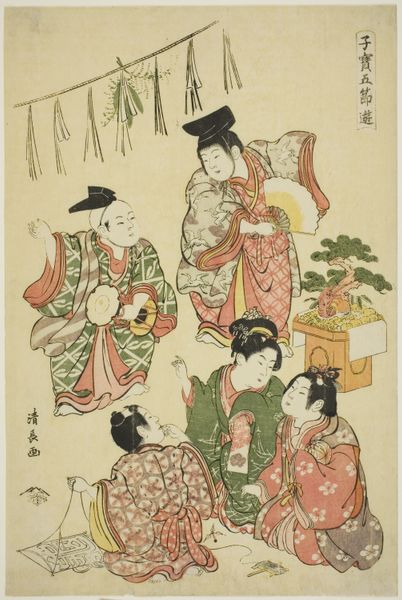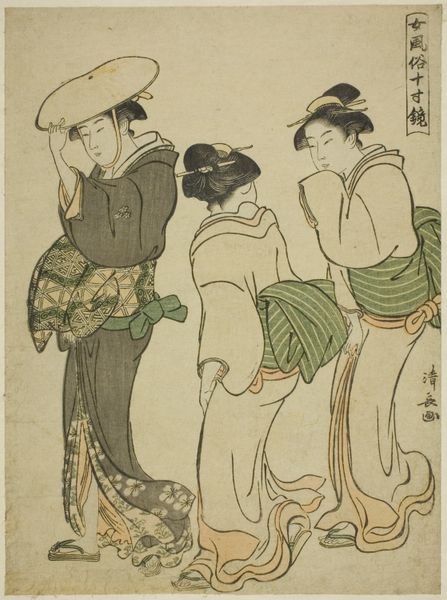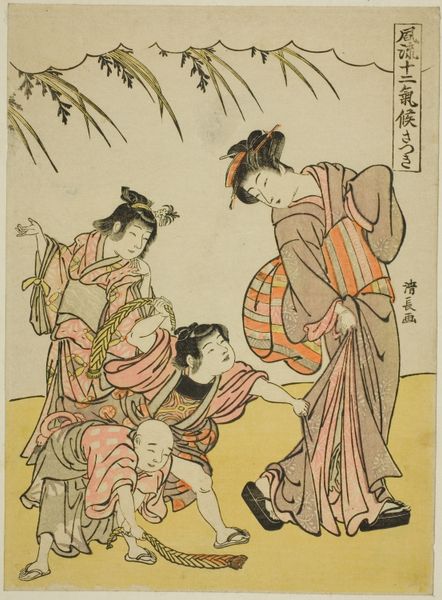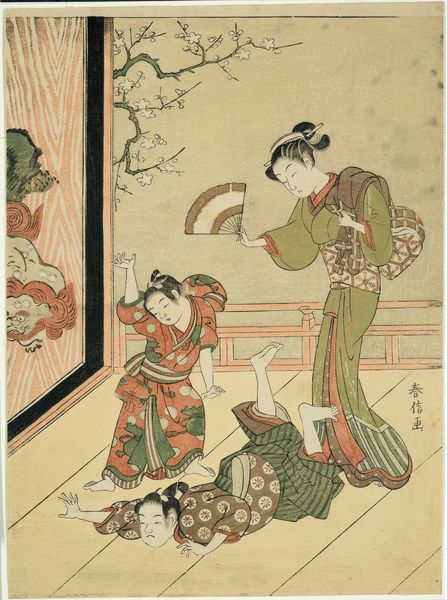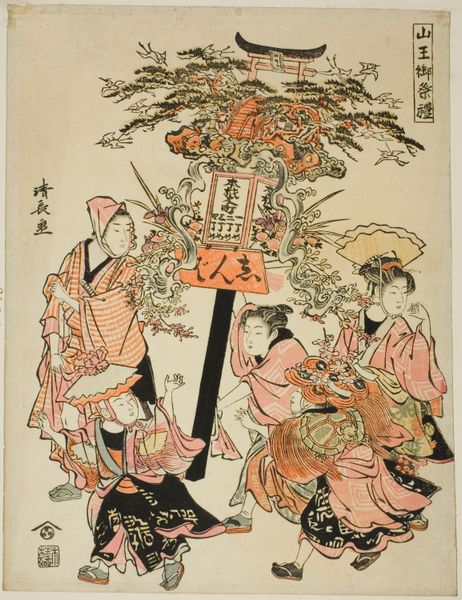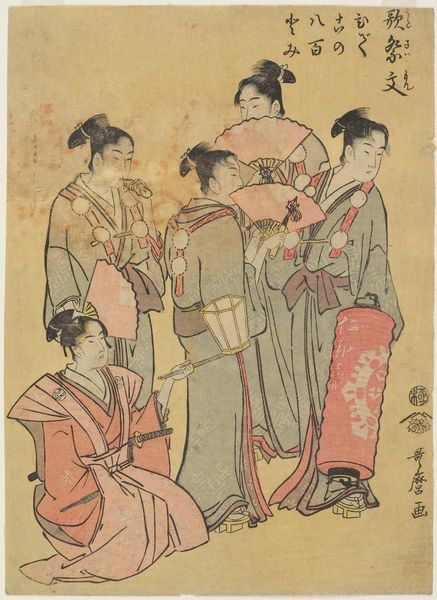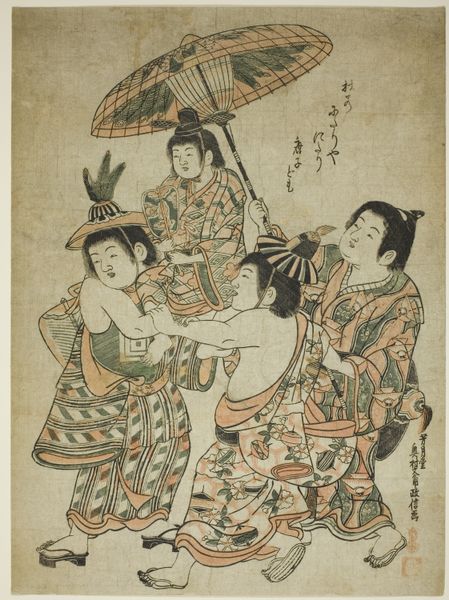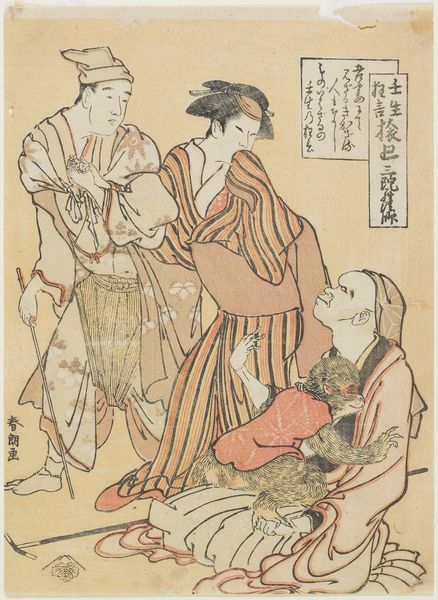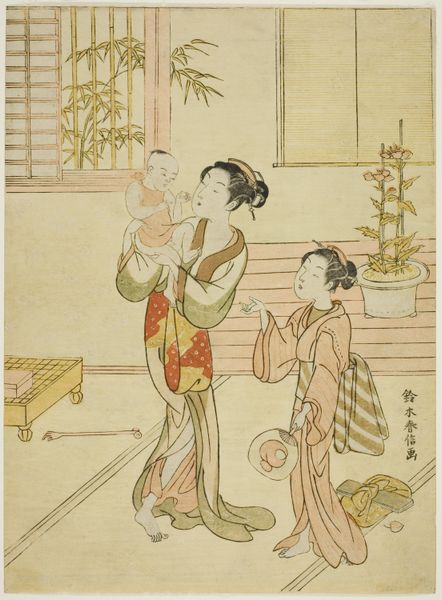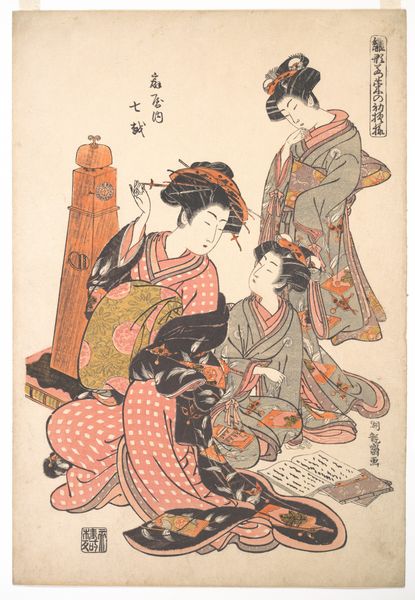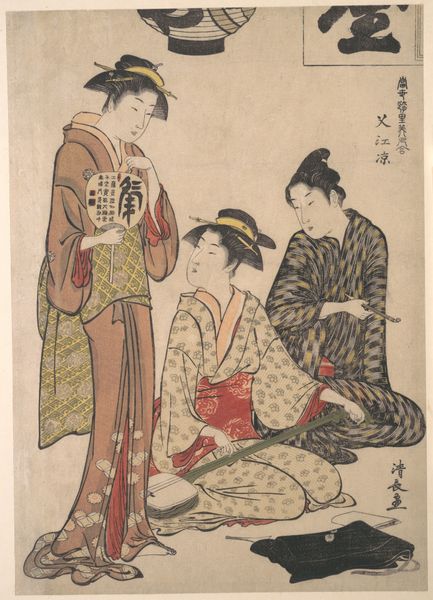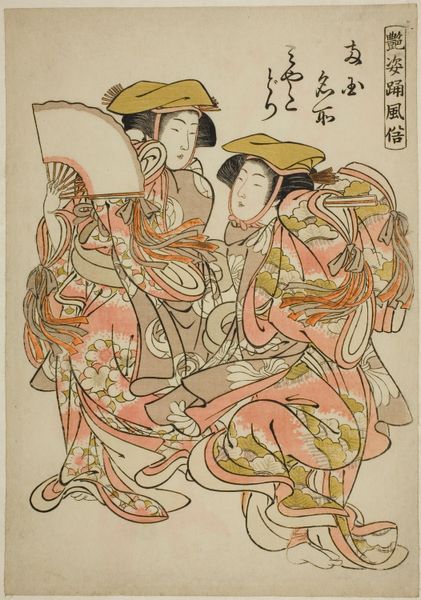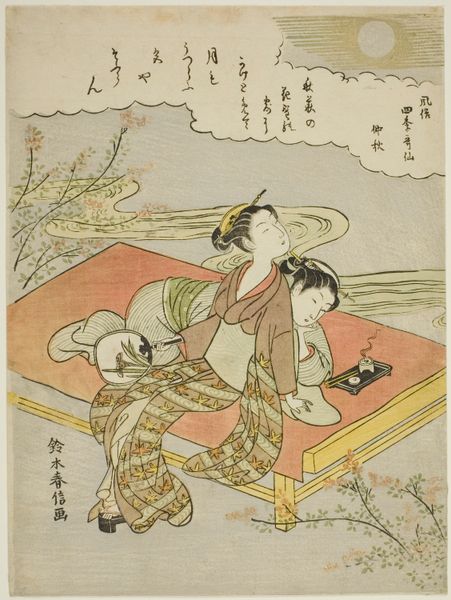
The Tanabata Festival, from the from the series "Precious Children's Games of the Five Festivals (Kodakara gosetsu asobi)" c. 1801
0:00
0:00
print, woodblock-print
# print
#
asian-art
#
ukiyo-e
#
woodblock-print
#
genre-painting
Dimensions: 36.4 × 23.4 cm
Copyright: Public Domain
Curator: Ah, "The Tanabata Festival" by Torii Kiyonaga, part of the "Precious Children's Games of the Five Festivals" series. It’s a woodblock print, likely created around 1801. A snapshot of early 19th-century Japanese life, acquired by the Art Institute of Chicago. Editor: It's… serene. Even though it depicts children playing, there's a stillness, a gentle quality in the lines and colors. It gives off an air of domestic harmony, but in a constructed, posed kind of way. Curator: Kiyonaga excelled at portraying women and scenes of everyday life. We have here a celebration of Tanabata, or the Star Festival. The arrangement and depiction of figures echoes traditional Ukiyo-e sensibilities. Consider the social context – the Edo period, with its strict social hierarchies, leisure became intertwined with expressions of class. Editor: Yes, I agree. Looking closer, I’m struck by the layers of symbolism woven into the image. Notice how some children are actively cleaning sandals – there's a subtle lesson about preparedness and respect perhaps? The towering adult figure holding an umbrella over another figure is a not-so-subtle class display of having a "servant", even for kids' playtime. It definitely prompts thinking about gender, labour and social class even when at play. Curator: Indeed. Such scenes weren't merely sentimental depictions; they reinforced social values and aspirations. These prints often served as both art and cultural mirrors reflecting the desires and the realities of its patrons, common townspeople and the merchant class of the Edo era. The very act of representing it and purchasing a copy served as a political statement. Editor: It's interesting to view art through the lens of consumerism then. This print seems to have the intent to showcase and preserve ideals around childhood. Also the women have such statuesque heights that reinforce contemporary ideals of feminine beauty... though I suppose in a patriarchal setting, childhood ideals are linked to class status too, as the kids playing are not child labourers or working in the farms, so that makes you think who were Kiyonaga's patrons at the time, or whom this print might have been created for. Curator: Precisely, and by examining the role of these prints and artistic production through historical contexts, we gain insights into the relationship between aesthetics, power, and cultural values in the period. The Tanabata Festival embodies more than just playtime. Editor: It’s a potent reminder that art is never truly separate from its society. Considering these historical nuances and aesthetic traditions offers a richer experience of how an seemingly innocuous genre scene unveils larger narratives that help unpack complexities from different gendered and class perspectives.
Comments
No comments
Be the first to comment and join the conversation on the ultimate creative platform.
